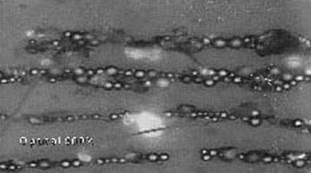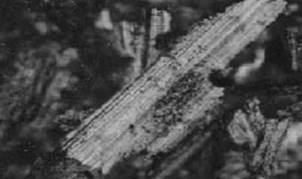





Published on Feb 14, 2025
Since the world’s resources of material and energy are getting progressively, by necessity, there is growing involvement in studies of wear on a global basis. Wear of sliding components result in reduced mechanical efficiency and an irretrievable loss of material in the form of wear debris. Wear at the interface between moving particles is a normal characteristic of machine operation.
The kind and rate of wear depend on the machine type. Lubrication is provided between the moving surface to minimize the wear but during operations millions minute wear particles entering the lubricating oil. These particles are in suspension in the oil, larger particles may be trapped by filter while others generally too small to be removed, remain in suspension in the circulating oil.
Condition based monitoring has, in the past, been referred to as an art, when quite clearly it is a science, and despites the cost of machine, surprisingly little attention has been devoted to this science from the viewpoint of understanding and modeling failure mechanisms and the study of probability to failure. Predictive maintenance technique has now become common exercises as they maximize the machine availability time and minimize the cost of maintenance, since the machine can be stopped just before as impending problem in an other wise healthy machine
Fault detection using vibration analysis is difficult in very low speed – high load noisy machines. In the case of slow speed bearing the vibration generated by damaged components is very low, usually close to the floor noise and difficult to identify. In these situations, Wear Debris Analysis has proven useful in providing supporting evidence on the bearing or gear status. It also provides information on the wear mechanism, which is involved.
Wear metals are caused by the relative motion between metallic parts. The motion is accompanied by friction and wear on the surfaces, which are in contact with one another. The metal particles are rubbed off due to friction and enter the lubricating oil, the degree of wear can be evaluated as being normal or abnormal. The wear metals have the same chemical composition as the components from which they come, and type of wear metal can provide information on which part being worn. Increased quantities of iron are common, since many parts are composed of iron, while an increase in content of less common metals such as silver can often indicate precisely which component is being worn abnormally.
The size and shape of wear material will differentiate between the following wear mechanisms.
► Rubbing
► Surface Fatigue
► Corrosion
► Sliding
► Cutting
The particle material will pin point to the source and therefore deteriorating component-wearing race, rolling element or cage, rubbing scales, gear teeth etc.
There are six basic particles type generated through the wear process. These include ferrous and non-ferrous particles and comprise of:
Rubbing wear particles are generated because of normal sliding wear in a machine and result from exploitation of particles of the shear mixed layer. Rubbing wear particles consists of flat platelets, generally 5 microns or smaller, although they might range up to 15 microns depending upon equipment associations. There should be little or no visible texturing of the surface and thickness should be 1 micron or less
Cutting wear particles are generated as result of one surface penetrating another. There are two ways of generating this effect.
A relatively hard component can become misaligned or fractured resulting in hard, sharp edge penetrating a soft surface. The particle generated this way is coarse and large, averaging 2-5 microns wide and 25-100 microns long.
Hard abrasive particles in the lubrication, either as contaminants such as sand or wear debris from another part of this system, may become embedded in soft wear surface(two body abrasion) such as Lead/Tin alloy bearing. The abrasive particles protrude from the soft wear surface and penetrating the opposing wear surface. The maximum size of cutting wear particles generated in this way is proportional to the size of abrasive particles in the lubricant. Very fine wire-like particles can be generated with thickness as low as 25 microns.
Cutting wear particles are abnormal. Their presence and quantity should be carefully monitored. If the majority of the cutting particles in a system are a few micrometers long and a fraction of a micrometers wide the presence of particulate contaminants should be suspected. If a system shows increased quantity of large (50 microns long) cutting wear particles, a component failure is potentially imminent.
These particles are generated in the bearing cracks. If generates their presence gives an improved warning of impending trouble as they are detectable before any spalling occurs. Rolling fatigue generates few spheres over 5 microns in diameter while the sphere generated by welding, grinding and corrosion are frequently over 10 microns in diameter.

Severe sliding wear particles are identified by parallel on their surfaces. They are generally larger than 15 microns, with the length-to-width thickness ratio falling between 5-30 microns. Severe sliding wear particles sometimes show evidence of temper colors, which may change the appearance of the particle after heat treatment.

These distinct particle types have been associated with rolling bearing fatigues.
Fatigue spall particles constitute actual removal from the metal surface with a pit or a crack is propagated. These particles reach a maximum size of 100 microns during the microspalling process. Fatigues spalls are generally are flat with a major dimension-to-thickness ratio of 10 to 1. They have a smooth surface and a random, irregularity shape circumference.
Laminar particles are very thin free metal particles with frequent occurrence of holes. They range between 20 to 50 microns in major diameter with a thickness ratio of 30:1. These particles are formed by the passage of wear particles through a rolling contact. Laminar particles may be generated throughout the life of a bearing.
1. VENKATRAMAN.A, SENTHILVELAN.T, “WINTER SCHOOL ON RECENT TRENDS IN DIAGNOSTIC MAINTENANCE”.
2. PRABHU.B.S, “WORKSHOP ON PLANT ENGGINEERING AND INDUSTRIAL TRIBOLOGY”.
| Are you interested in this topic.Then mail to us immediately to get the full report.
email :- contactv2@gmail.com |